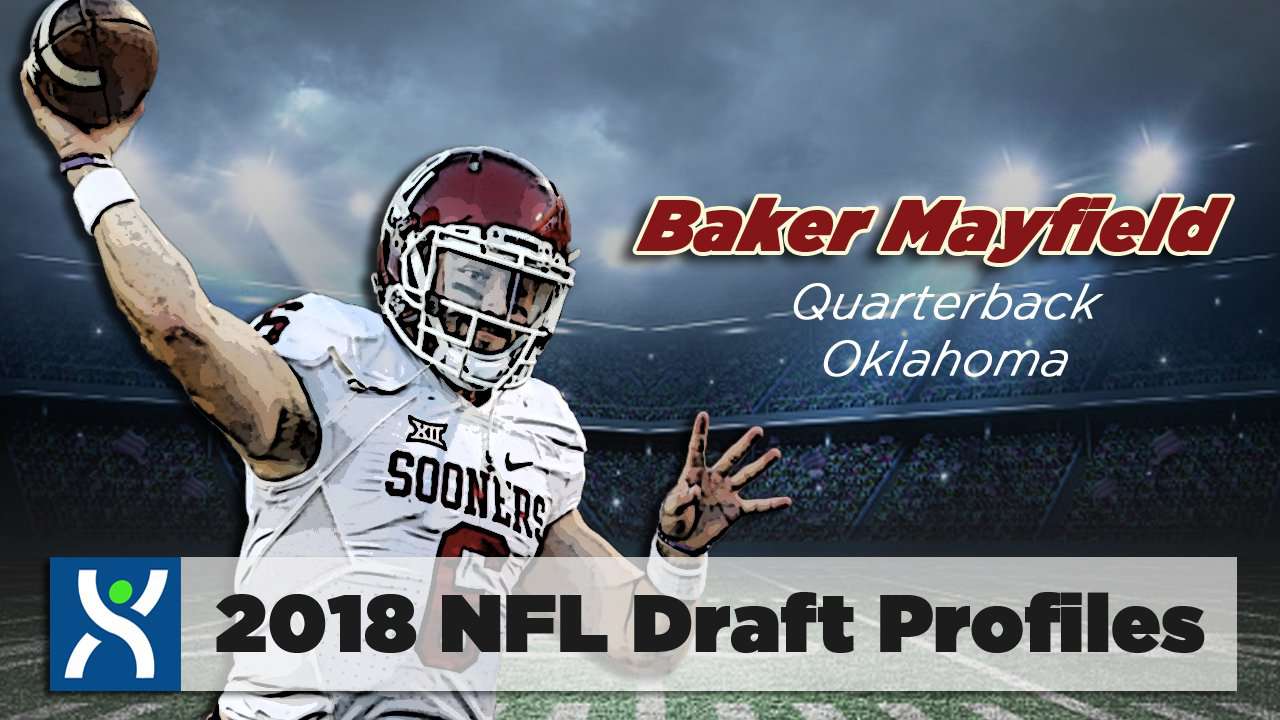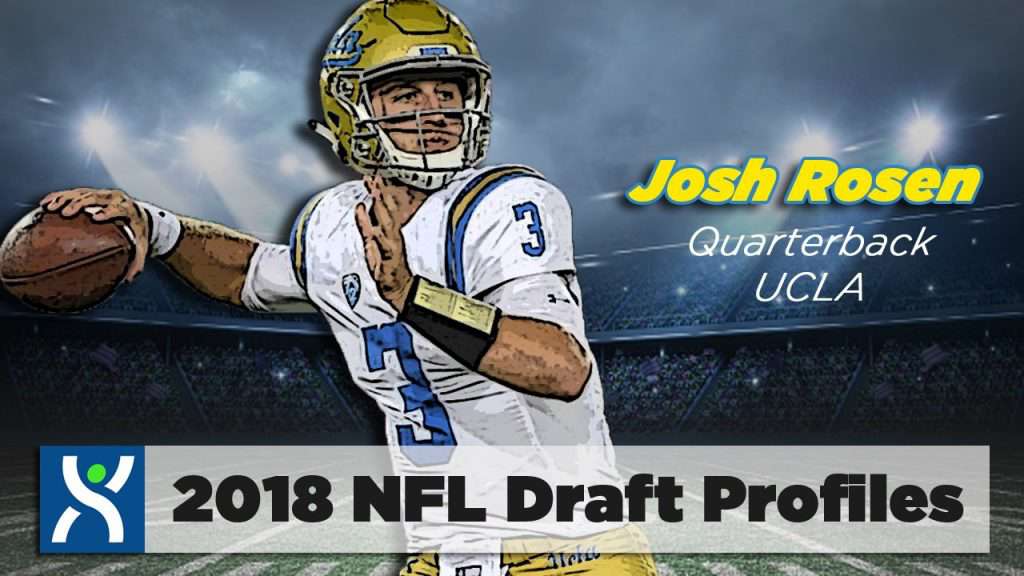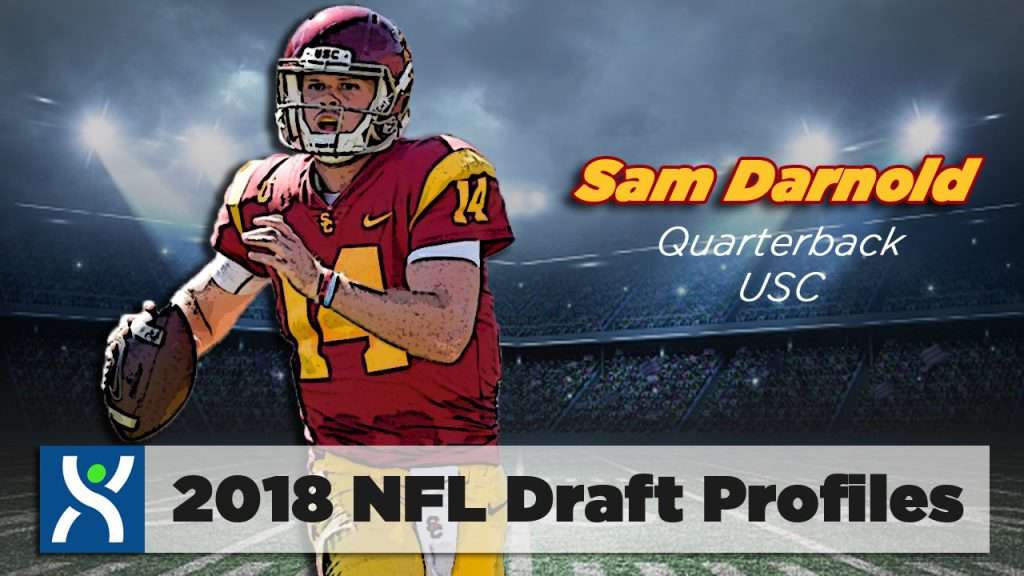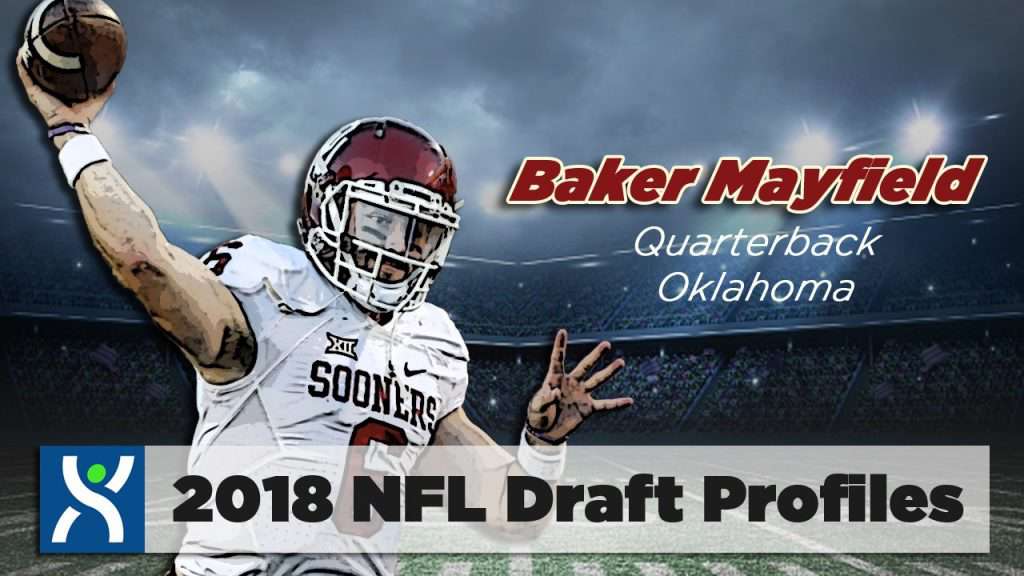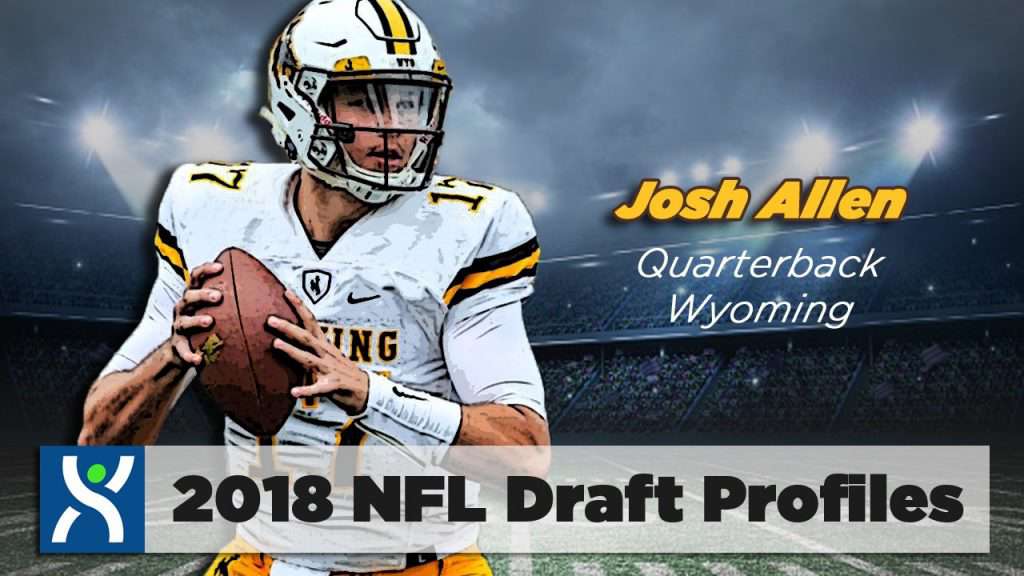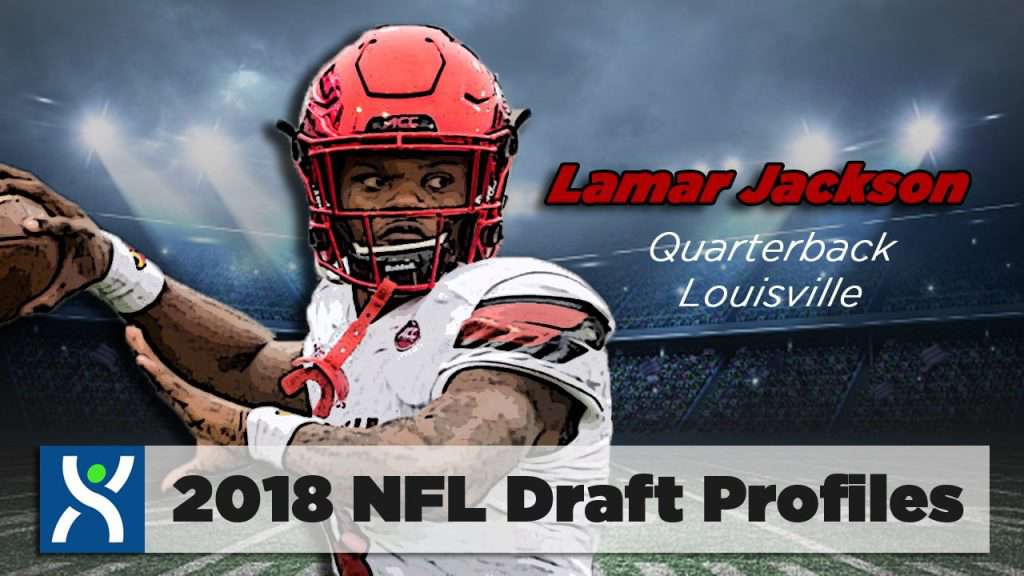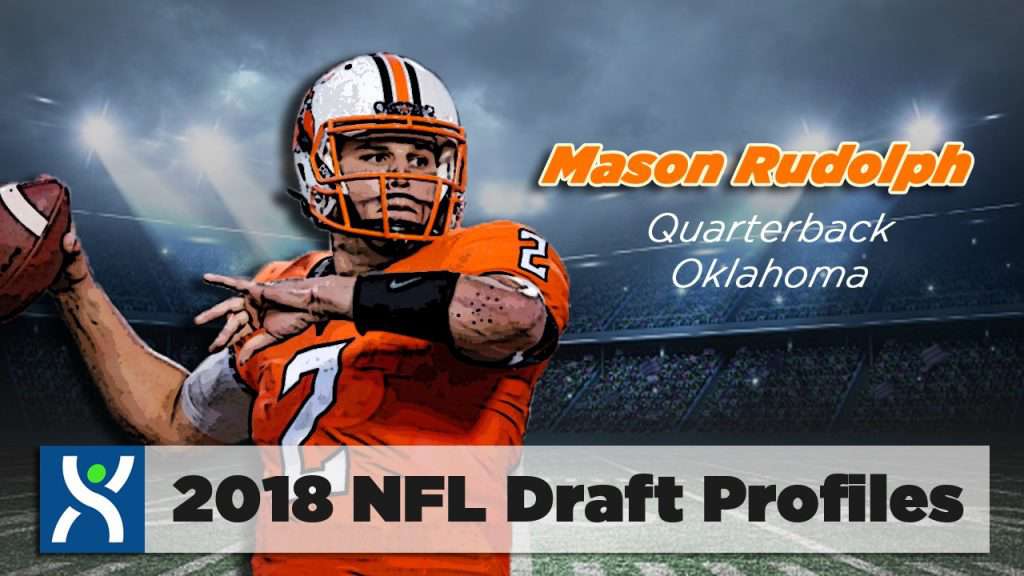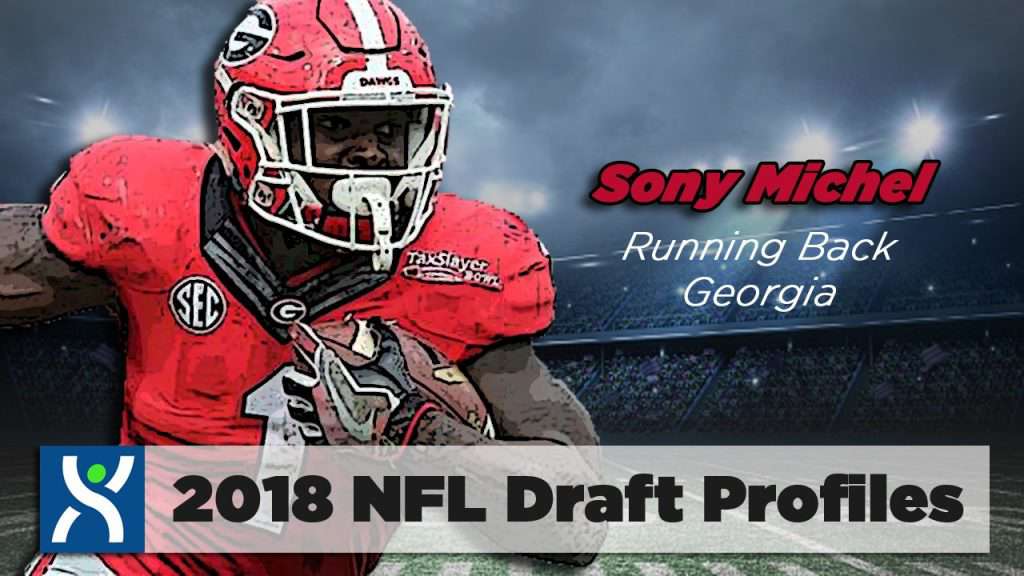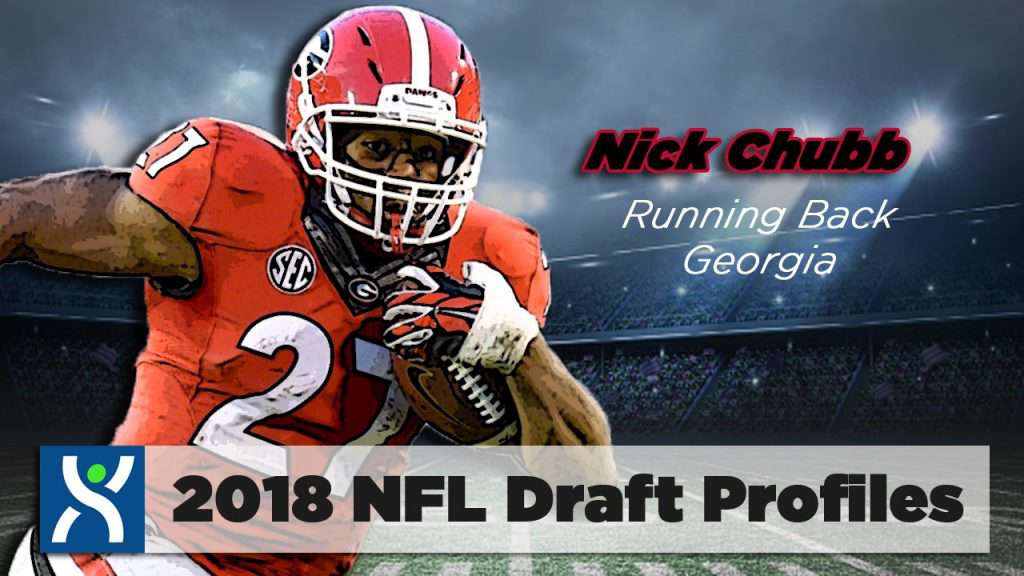#ShutUpAndDraft
We’ve gotten to the point in the draft process where every story, every soundbite, and every Twitter post is met with a 1,000-word think piece on its meaning. But there’s one aspect of this year’s draft that is different; The overarching question on everybody’s mind isn’t necessarily when the prospects will be draft, but their best fit.
Each prospect’s traits, tendencies, strengths and weaknesses have been on full display since the combine. And the elevated conversation on how these characteristics translate to specific offenses has been fascinating.
This two-part series looks at some of the draft top prospects and their best fits. Using projected draft value, we’ll identify teams that best suit each incoming rookie. While draft day will be the ultimate wild card, it’s important to keep sight of what makes each prospect valuable despite where they land.
1. Josh Rosen, QB – UCLA
Best Fit – New York Jets
Pros: Rosen’s outstanding footwork and ability to move within the pocket will serve him well behind New York’s bottom-ranked offensive line. His consistent throwing motion will be key when they’re behind in games due to their poor defense. He’ll have some veteran talent around to help him get acclimated to the professional game speed. Jets receivers, while not elite talent, generate enough separation to work well with Rosen’s accuracy and ball placement.
Cons: A tendency to take unnecessary risks will earn him some highlight reels. Good and bad. Offensive line issues will also prove a problem for the seemingly non-mobile QB. Think about it like this: Josh Rosen ran a 4.92 40-yard dash; Peyton Manning ran a 4.8.
Overall: Poor scouting has pinned the Jets in at the quarterback position. Josh McCown has been the only bright spot in both real and fantasy football, but his retirement draws near. New York should focus on offensive line recruits, but their moves up in the draft have shown their hand. They want a quarterback. Badly. Albeit contrary to the proper team-building process, Rosen instantly sets the Jets on a positive path to rebuilding. If they shore up their line, they can compete in 2018.
2. Sam Darnold, QB – USC
Best Fit – New York Giants
Pros: Darnold is well versed in using spread concepts and would integrate well into Pat Shurmur’s offense. His on- and off-platform accuracy won’t matter much if he’s passing to Odell Beckham Jr., but players like Sterling Shepard rely on route-running precision. Darnold could adjust to both playmakers. His ability to move and work within the pocket will allow plays to develop, opening up all levels of the field.
Cons: Poor footwork generates off-balanced throws and interrupts his route timing. However, the Giants’ offensive line has operated well in pass protection and could minimize this flaw. While working the pocket, he’s been known to be careless in handling the ball. Pre-snap reads are also inconsistent. Recognizing safety and linebacker cues are an issue and need to improve.
Overall: If forced into it, Darnold could start Week 1. If forced. There’s no question he has the traits to play at the professional level, but he needs to improve in a number of areas before he’s made a starter. The Giants can offer this path to success. New York is expected to rebuild their offensive line while retaining their elite receiving talent. An extra year to improve his skills would put Darnold in a prime position to carry the team in 2019.
3. Saquon Barkley, RB – Penn St.
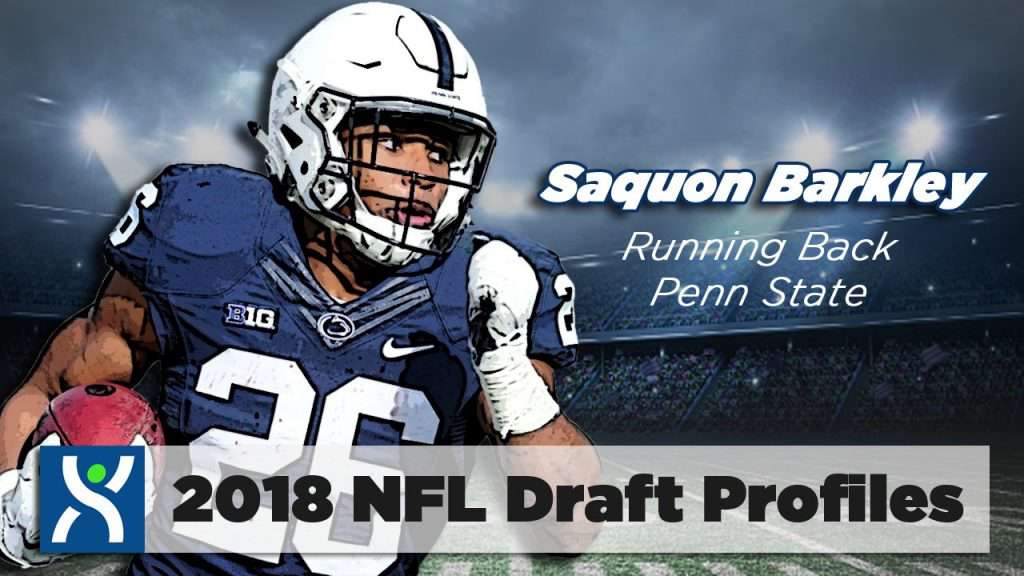
Best Fit – Tampa Bay Buccaneers
Pros: He’s 233 pounds and can run a 4.40 40-yard dash. Barkley is not only fast but agile (4.24 20-yard shuttle). Opposing defenses would be hard pressed to cover the multi-receiver sets typically used in Tampa’s vertical offense in addition to the elusive prospect. Barkley’s also a talented receiver. Even though he’s not an elite route runner, Barkley’s presence on the field wouldn’t give away any clues as to the offensive play call.
Cons: Barkley is one of the bigger backs in the class by weight but lacks power. The Bucs have a middle-of-the-road pass blocking unit and Barkley will find himself in short yardage situations where he’ll need to use his size. On a similar note, his pass blocking needs to improve. He recognizes blitz formations, but his technique is flawed, which would leave Jameis Winston exposed to edge pressure.
Overall: We’ve hit peak use of the term “generational talent.” So let’s just keep it simple. Him good. Barkley has his warts, but he’s arguably the best in the class with three-down potential. An offense like Tampa’s is an ideal fit. With most of the offense in place, the pressure’s off Barkley to carry the offense his rookie year. As he reaches his full potential, the Bucs will become a contending force within the division.
4. Baker Mayfield, QB – Oklahoma
Best Fit – Cleveland Browns
Pros: Mayfield can deliver the ball from multiple platforms with high accuracy and placement scores at all levels of the field. If the Browns are forced into shootouts, all of their starting receivers have the potential to see multiple targets. Offensive coordinator Todd Haley has repeatedly tailored his offense to match his players’ strengths. While Mayfield comes from a spread-style offense, working with Haley would give the OC time to match the play calls to Mayfield.
Cons: Mayfield’s accuracy under pressure takes a sharp hit compared to when he’s free or on the move. Cleveland’s offensive line will need time to gel, and Mayfield will feel the consequences. In addition, the deep plays or those that require time to develop will suffer, limiting the play-calling ability.
Overall: Folks want to liken him to Russell Wilson because of his size and scrambling ability. OK. Even if he’s 60% of Wilson, imagine a Wilson-like quarterback behind a functional offensive line with talent at both the wide receiver and tight end position. Excited yet? Throw in Todd Haley’s offensive style that plays to everyone’s strengths and Mayfield has the potential to make an impact his rookie year.
5. Josh Allen, QB – Wyoming
Best Fit – Buffalo Bills
Pros: Allen’s accuracy on short-intermediate throws would fit with the Bills’ current group of pass catchers. Like what he did during Nathan Peterman’s single start in 2017, Sean McDermott can install single-read plays to limit Allen’s mistakes. Allen also comes from a scheme heavily utilizing play action concepts. With an elite talent in LeSean McCoy to back him up, the offense could function as a dink and dunk team.
Cons: Past a single read, Allen’s processing capability takes a nose dive. He scrambles unnecessarily, and that trait does not fit well within a team that just lost offensive linemen. His decision making on difficult throws could be problematic with receivers who struggle to separate. Games could get out of hand quickly on just a few errant throws.
Overall: Recent trades indicate the Bills are entering a rebuild phase for the franchise, but it’s clear they’re looking for a new face of the franchise. Allen has the potential, and a trial by fire could prove useful for the prospect. Continual investments within the offense as Allen improves would pay off dividends if the team is willing to invest.
6. Derrius Guice, RB – LSU
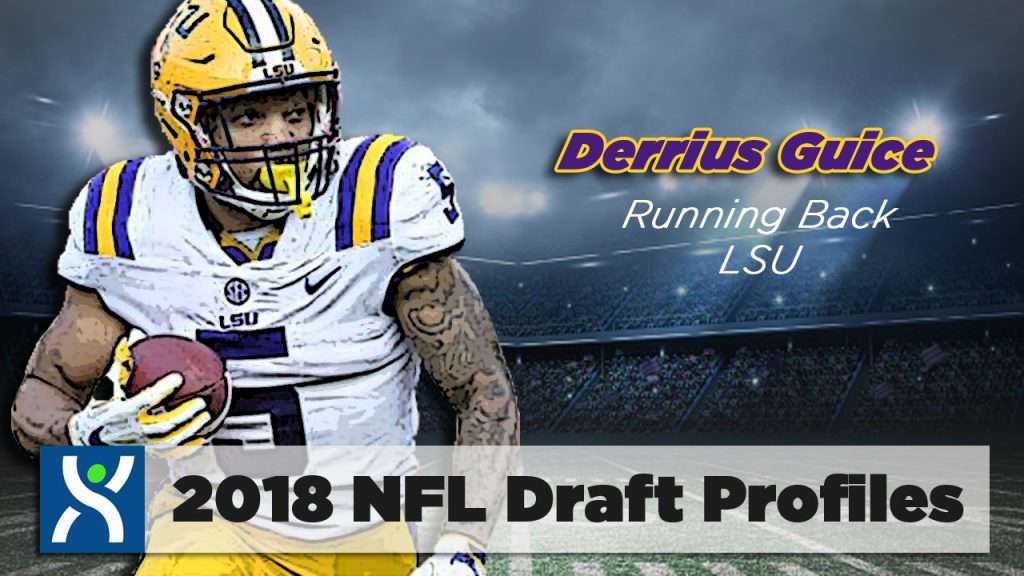
Best Fit – Washington Redskins
Pros: Guice has it all. Power. Balance. Speed. He has shined in outside zone schemes featured in the Redskins’ run game, but Guice can excel in gap schemes as well. His ball security is well documented, and that should also keep him in Gruden’s good graces. His vision and agility make his cut backs a thing to watch. Even if Washington’s offensive line is still a work in progress, Derrius can find the wiggle room to make positive gains each down.
Cons: Guice’s durability is a concern. There’s the hope he’ll regain some of the acceleration he displayed in college, but it’s been lacking as of late. While the zone schemes are his forte, without proper acceleration his gains would be minimal if he bounces to the outside. He also needs to work on hand placement when the ball is in the air. Alex Smith tends to use the running back as much as any in the league and needs reliable outlets.
Overall: It was pretty obvious what Washington was going to do depending on which running back was on the field. Samaje Perine only received 24 targets in his 8 games as a starter. LSU doesn’t ask much of their running backs in the passing game, but Guice’s hand technique indicates he can grow into the role. However, Washington’s offensve line is being retooled. Guice must improve as a blocker to keep himself on the field.
7. Lamar Jackson, QB – Louisville
Best Fit – New Orleans Saints
Pros: Jackson is a threat on the field as both a passer and a runner. He consistently displayed progression through multiple reads that would keep the bevy of weapons in New Orleans in play for fantasy owners. After learning Bobby Petrino’s system, Jackson would fit well with Sean Payton’s scheme, which has West Coast underpinnings. Lamar functions best when operating in rhythm and under center. Well-timed plays with three-to-five step drops would keep Michael Thomas in the top tier of wide outs without affecting the running game.
Cons: Lamar takes unnecessary risks in the end zone. His confidence in his playmaking ability can get the best of him and it shows when he forces throws into windows that don’t exist. He struggles to reset his feet while on the run or when rushed. His accuracy suffers because of his mechanics when setting up the throw, not from a lack of understanding the route assignments.
Overall: The media circus surrounding Jackson’s talent has been on full display the past two months. Bottom line: He’s a quarterback — a starter-caliber quarterback. While he could make a similar Day 1 impact as some of the other higher-ranked prospects, let him fall. Lamar would largely benefit from working behind a veteran for a year or two. His mechanical errors are fixable with time, and the Saints could sustain their offensive firepower with Jackson learning from Drew Brees.
8. Mason Rudolph, QB – Oklahoma St.
Best Fit – Baltimore Ravens
Pros: Rudolph has excellent deep ball accuracy both within the pocket and when on the run. His deep ball placement shields his receivers from unnecessary contact, and his 50/50 shots will earn him some highlight reels. Offensive coordinator Marty Mornhinweg’s offensive philosophy incorporates vertical concepts into the passing game that would fit Mason’s strengths. He would also have the benefit of working behind Joe Flacco to improve mechanical flaws in his drop back.
Cons: Baltimore’s current deep threats include John Brown and Breshad Perriman. Not ideal. The team would need to make significant investments at the receiver position to make the scheme fit the quarterback. His accuracy at the intermediate level would adversely affect Michael Crabtree’s production, and he’s currently the best wide receiver on the roster.
Overall: Mason has the chops to succeed at the pro level. He just needs time to develop. His flaws can be partly explained by systems incorporated at Oklahoma State, but his fluidity in setting up short throws is drastically different than deeper targets. Improvement in pre-snap reads should also be added to the list of needs. Baltimore’s strong offensive line would give Rudolph the time he needs to work through his progression and get in sync with the receivers. Regardless of where he’s drafted, his preseason starts should give a team an indication of where he’s at and they can adjust accordingly.
9. Sony Michel, RB – Georgia
Best Fit – Indianapolis Colts
Pros: Michel is of the true three down backs in this class. He has displayed above average talent as a runner, pass catcher, and, most importantly to Indianapolis, pass blocker. Great hand technique and on field IQ translates to Sony’s ability to handle defensive personnel from all levels. His vision and intuition as a runner allows him to weave through even the worst lines, but his versatility as a pass catcher will keep defenses in check.
Cons: The Georgia product has displayed some issues with ball security. Michel’s ball carrying technique is sound but still produced a high fumble rate compared to his class. His interior run game could improve as well. The Colts’ run blocking is average, but his running style at the line of scrimmage could hamper his effectiveness through tight creases.
Overall: If the Colts want to ensure that Andrew Luck continues to sling “The Duke” on Sundays, they need to ensure he’s protected. Their offensive line is an obvious priority, but the running backs must be able to contribute here as well. Without Michel’s fumbling issues, he’s one of the best in the class at every aspect of the position. His addition to the squad would ease Luck’s re-integration into the offense and improve it as a whole.
10. Nick Chubb, RB – Georgia
Best Fit – Detroit Lions
Pros: Similar to his Georgia teammate, Chubb’s skills as a runner are quite exceptional. He’s a powerful runner who can push piles and break tackles but could just as easily twist his hips to slip through linemen. These traits sound like a cross between what LeGarrette Blount is and what Ameer Abdullah was supposed to be. His burst and agility combined with his balance after contact would be a welcomed addition to the Detroit backfield.
Cons: There are still concerns about Chubb’s injury to his MCL, PCL, and LCL sustained in 2015. There were flashes of his former self during his senior year, but those flashes were smothered by seemingly sluggish reps or missed time due to other injuries. In addition, Chubb was used less and less as a receiver after returning from injury. Without this threat, defenses could stack the box and continue to limit the Lions’ ground game success.
Overall: It’s a boom/bust proposition when it comes to Chubb. If he’s fully recovered from his injury, there’s hope the Lions will have a 1,000-yard rusher. If not, they’ll continue to require a complementary back to keep the offense moving. The Lions have the personnel in place to allow for Chubb’s integration into the NFL without fear of risking a setback. They’ve insulated themselves at the position to fully investigate Chubb’s longterm health and longterm outlook. The Lions would be wise to ease him into starting role to ensure he can maximize his value within the offense.
Sources: Matt Waldman RSP Boiler Room; Matt Waldman Rookie Scouting Portfolio; Benjamin Solak Contextualized Quarterbacking; NFL Next Gen Stats; Football Outsiders

